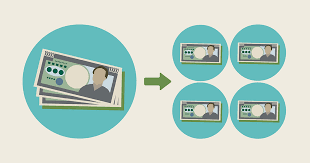Photo by Steve Johnson on Unsplash
It is more important than ever to keep our devices charged and ready to go in today’s fast-paced digital world. Ensure you have the right charging cable for your phone, tablet, laptop, or any other device.
But there are so many charging cables that it can be hard to figure out which one to use with what. This guide will teach you about the different kinds of Charging Cables and how to use them.
USB-A to USB-C
USB-A to USB-C cables are among the most common charging cables used today. The USB-A end is the standard rectangular connector found on most computers and chargers, while the USB-C end is the newer, smaller, and more versatile connector.
Uses
- Smartphones and Tablets: Most modern Android devices use USB-C for charging and data transfer.
- Laptops: Many newer laptops, especially from brands like Apple, Dell, and Lenovo, have adopted USB-C for charging and connectivity.
- Accessories: Power banks, external hard drives, and headphones often use USB-C connectors.
USB-C to USB-C
USB-C to USB-C cables feature USB-C connectors on both ends. These cables are becoming increasingly popular due to their ability to handle higher power and faster data transfer rates.
Uses
- High-Speed Charging: Many new smartphones, tablets, and laptops support fast charging through USB-C to USB-C cables.
- Data Transfer: These cables are ideal for quickly transferring large amounts of data between devices.
- Universal Connectivity: USB-C is becoming a universal standard, making these cables useful for various devices.
USB-A to Micro-USB
USB-A to Micro-USB cables have been the standard for many years, especially for older Android devices and various accessories.
Uses
- Older Smartphones and Tablets: Many Android devices use Micro-USB ports for charging and data transfer.
- Accessories: Devices like Bluetooth headphones, speakers, and cameras often use Micro-USB connectors.
- Gaming Controllers: Many gaming controllers, including those for the PlayStation and Xbox, use Micro-USB for charging.
Lightning Cables
Lightning cables are proprietary connectors developed by Apple. They are used exclusively with Apple devices and have a distinct design that sets them apart from other types of charging cables.
Uses
- iPhones and iPads: All iPhones and most iPads (except the latest models with USB-C) use Lightning cables for charging and data transfer.
- Accessories: Many Apple accessories, such as AirPods, Magic Mouse, and Magic Keyboard, use Lightning connectors.
- Apple Pencil: The first-generation Apple Pencil also uses a Lightning connector for charging.
USB-A to Lightning
USB-A to Lightning cables are specifically designed for Apple devices. The USB-A end connects to standard USB ports on chargers and computers, while the Lightning end connects to Apple devices.
Uses
- Charging Apple Devices: These cables charge iPhones, iPads, and iPods.
- Data Syncing: They allow for data transfer between Apple devices and computers.
- Car Chargers: Many car chargers come with USB-A ports, making these cables useful for on-the-go charging.
USB-C to Lightning
USB-C to Lightning cables are designed to provide faster charging and data transfer for Apple devices. These cables are compatible with USB-C chargers and offer a more efficient charging experience.
Uses
- Fast Charging: These cables enable fast charging for compatible iPhones and iPads when used with a USB-C power adapter.
- Data Transfer: They offer faster data transfer speeds than USB-A and lightning cables.
- Newer Apple Devices: These cables are ideal for the latest iPhone and iPad models that support fast charging.
Conclusion
Understanding the different types of charging cables and their uses can help you keep your devices charged and ready to go. Knowing which type of cable to use can save you time and frustration if you need a cable for your smartphone, tablet, laptop, or accessories. As technology evolves, staying informed about the latest developments in charging cables will ensure you always have the right tools to power your digital life.

Daniel J. Morgan is the founder of Invidiata Magazine, a premier publication showcasing luxury living, arts, and culture. With a passion for excellence, Daniel has established the magazine as a beacon of sophistication and refinement, captivating discerning audiences worldwide.





